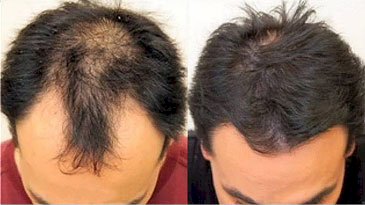Follicular Hair Transplants: A Knowhow

Follicular transplant is the next big thing in hair transplant technology. It is the most effective among hair restoration methods. Here, the surgeon transplants hair from the permanent zone in the back of the scalp onto the affected areas.
In this process, the donor tissue is removed in one piece ensuring the follicular units being relocated from the back of the scalp are not damaged. Single strip harvesting preserves the follicular units which are an integral part of the process ensuring the hair follicles are not damaged.
This technique follows a well laid out pattern allowing the surgeon to use the small recipient site. Follicular units removed from the donor tissue are minutely studied by the microscope. With this, the stereo microscopic dissection raises the yield of an absolute number of follicular units, and subsequently the total amount of hair as well.
The Procedure Of Follicular Hair Transplant
In the process of hair transplant, the surgeon scans the follicular units removed from the donor tissue under a microscope. This helps protect the follicular units by stereo microscopic dissection ensuring a rich yield of follicular units and the total amount of hair restored.
What Is A Donor Strip?
This is an essential part of a follicular hair transplant where the hair strip is taken from one part of the body and transplanted to the bald region of the scalp. The donor tissue is removed in one piece ensuring follicular units removed from the back of the scalp do not get damaged.
What Is Donor Strip Extraction?
For transplantation, the donor strip is taken out from the permanent zone in the back of the scalp and transplanted onto the bald areas of the scalp with no hair growth. This type of single strip harvesting ensures the preservation of follicular units and protection of the individual hair follicles from possible damage.
What Are Follicular Units?
A bundle of hair growing together is taken as a follicular unit in the transplant process. It is usually formed of one to four terminal hairs. These units are surrounded by one to two fine vellus hair, oil glands, a small muscle and a fine band of collagen. It is the skin’s hair-bearing structure that ensures maximum growth. Under the microscope, it is seen as a well-formed structure.
The hair is of smaller diameter and length than the hair replaced in case of genetic balding. It is highly recommended to use very small units. Whereas the amount of transplanted units is proportionately much larger. This helps the surgeon place up to four hair strands in a tiny recipient site. This brings tremendous implications for cosmetic surgery.
Follicular hair transplant has a considerable edge over micrografting. This type of transplantation gives a natural look to the transplanted hair.
How Is The Follicular Transplant Removal Made?
In this process, the individual follicular units are directly removed from the donor area meaning the method is independent of a linear incision. It is done by the surgeon who uses a 1mm punch to make a circular incision in the skin around the upper part of the follicular unit and then directly extracted from the scalp.
While follicular unit extraction (FUE) and follicular unit transplantation are treated as two different things, it is a grave mistake. FUE is a type of FUT wherein the follicular units are extracted directly from the scalp instead of microscopically dissected from a strip that is already removed. The individual follicular units can be obtained either through single strip harvesting and stereo microscopic dissection in follicular hair transplant or through FUE
What Do You Mean By Follicular Transplant Preservation?
Keeping the individual follicular unit as it is, becomes important in follicular hair transplants. The unit should not be broken up into smaller units or combined with larger ones. In the history of cosmetic surgery, this is a groundbreaking development. combining several follicular units or splitting them up is purely based on the transplant surgeons.
How Does Follicular Hair Transplant Differ From Mini And Micro Grafting
Even though follicular hair transplant is similar to the procedure followed by mini grafting and micrografting, they are different. The latter procedures use a multi-bladed knife to split the follicular units resulting in unacceptable levels of the transaction of hair follicles. Whereas in follicular unit transplantation, nature determines the graft sizes. The mini grafting and micrografting procedures determine the graft size arbitrarily. When the surgeon considers fit, the donor tissue is sliced to the size.
To state the difference between follicular hair transplant and mini-micro grafting procedures, in the latter, the hair follicles are neither kept intact nor are the follicle units preserved. Speed and economy of the procedure are more important in the case of mini-micro grafting and the process entails using a multi-blade knife quickly generating thin strips of tissue.
What's Your Reaction?





















